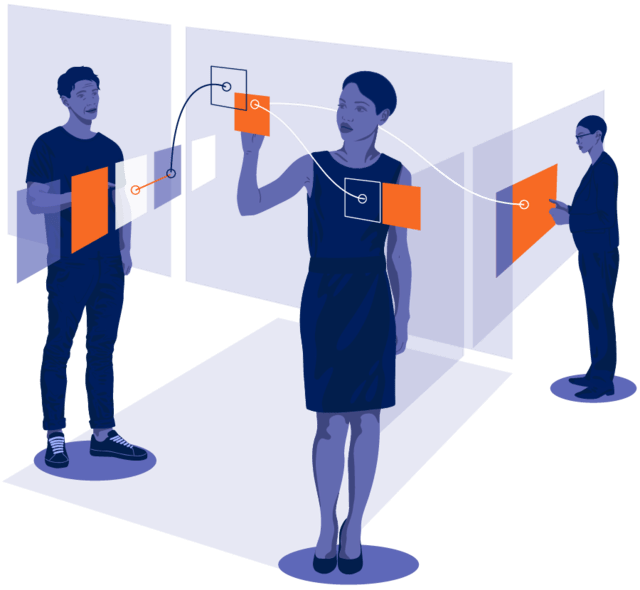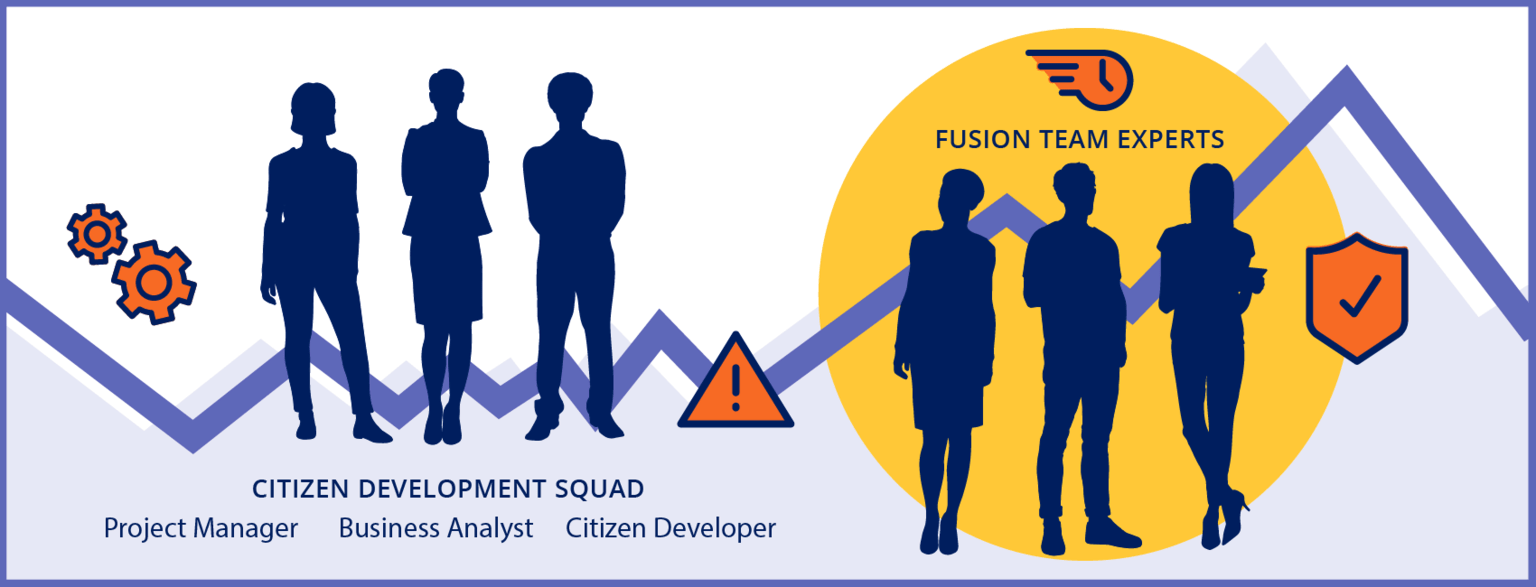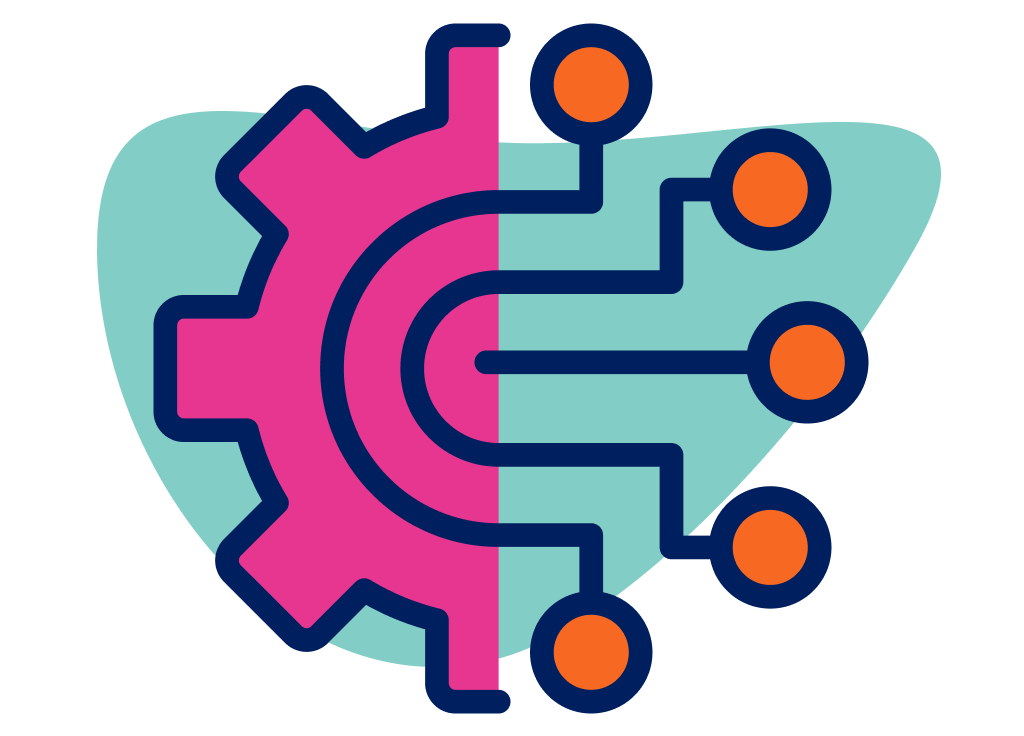
Fusion teams
Low-code collaboration to accelerate application delivery, reduce costs, and minimize risk

Intro to fusion teams
Enterprises struggle with long backlogs, which means that they are often unable to develop many apps that have the potential to drive significant business value.
A fusion team brings business and IT together to accelerate development, lower costs, mitigate risk, and ensure that what is delivered meets business expectations.
What is a fusion team?
A fusion team is a cross-functional approach to low-code application delivery that involves collaboration between citizen developers, IT, and other experts to mitigate security, operational, regulatory, reputational, and financial risk. With a fusion team, applications can be built quickly and at lower cost, without introducing unnecessary risk.
Why fusion teams?
Low-code authoring environments allow citizen developers to build low-complexity, low-risk department applications in ways that are fast, agile, and inexpensive.
But what about applications that are too complex and critical for citizen developers but not critical enough to be prioritized by IT?

How do fusion teams work?
Most fusion teams begin as a citizen development squad and are formed if a project introduces risk that can be mitigated by collaborating with a seasoned low-code developer or other expert – to assist with complex work, manage increased testing requirements, and ensure effective governance.

Who makes up a fusion team?
-
Project manager
Ensures project is completed on time and budget
-
Business analyst
Gathers and translates application requirements
-
Citizen developer
Develops and maintains app with low code
-
Subject matter expert(s)
Represents the business function for the app
-
Professional developer
Provides coaching and advanced configuration
-
IT professional(s)
Manages the CI/CD pipeline, testing, and tuning
How are fusion teams different from citizen development?
Citizen development
Citizen developers are able to work on low-risk, low-complexity projects without ever needing to write a line of code. Governance should be lightweight and largely automated.
Fusion teams
Fusion teams are formed when app complexity and criticality are beyond what can be accomplished by citizen developers, but can be addressed by including relevant experts rather than delivering the app entirely out of IT.

Best practices for a fusion-team approach
Integrating a fusion-team approach is a strategic move, and following best practices is the best way to ensure success. Some key ways to navigate the fusion-team landscape include:
- Cultivating “digital judgment”: Develop an understanding of technology governance, risks, and trade-offs within the team. Facilitate learning opportunities with governance and IT experts to nurture this skill among business teams.
- Aiming for precision in hiring: Collaborate with HR to ensure uniform and coherent job descriptions across teams. This practice enhances consistency and clarity in defining roles within fusion teams.
- Nurturing leadership buy-in and crafting a shared vision: Gain leadership support and foster a shared mindset among team members. Successful fusion teams require innovative and forward-thinking leaders, ensuring alignment between IT and line-of-business leaders.
- Facilitating cross-team communication: Prioritize regular meetings to share best practices, innovative solutions, and resources among your teams. Communication enhances collective learning and contributes to the overall success of fusion teams.

Challenges of a fusion-team approach
While fusion teams offer a dynamic and collaborative approach, they are not without challenges:
- Goal optimization over enterprise objectives: Teams might prioritize individual outcomes over broader enterprise goals, potentially leading to fragmented efforts and suboptimal results.
- Weak governance and oversight: Inadequate governance can pose risks, such as compromised data architecture and non-functionality.
- Leadership role ambiguity: Shifting digital delivery responsibilities from technology to business leaders may result in unclear leadership roles, offsetting strategic alignment.
- Suboptimal hiring practices: Inconsistent skill descriptions and resource duplication can occur if hiring practices lack precision, putting team dynamics and performance at risk.
- Limited knowledge sharing: Without regular cross-team communication, fusion teams might struggle with poor dissemination of best practices and innovative ideas, hindering overall progress.
The best solution is a strategic and well-coordinated approach emphasizing communication, clear governance, and alignment with broader organizational goals.

How technology can support fusion teams
Advanced technologies are key to harnessing the full potential of your fusion team. Key tech to consider includes:
- Low-code platforms: Empower team members, even those without extensive coding backgrounds, to contribute to application development through visual modeling and automation.
- AI integration: Leverage artificial intelligence to enhance decision-making processes, allowing teams to make informed choices and optimize workflows.
- Visual IDEs: Platforms offering a visual integrated development environment (IDE) facilitate seamless collaboration between IT and business stakeholders, streamlining communication and accelerating the development lifecycle.
These technological enablers bridge expertise gaps and amplify the agility and efficiency of fusion teams, ensuring they deliver innovative solutions in a timely and collaborative manner.
Frequently Asked Questions about fusion teams


